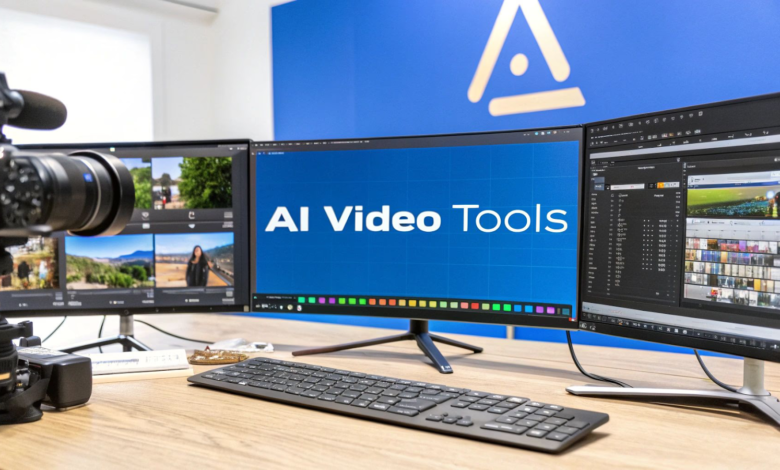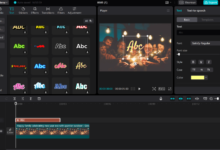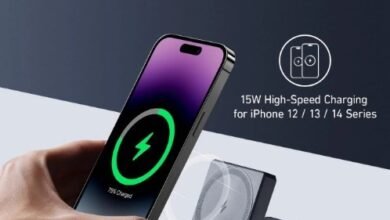Best Image to Video and AI Image Editor Tools of 2025

As of October 2025, AI has converted how creators and types flip static visuals into dynamic storytelling. From animating a single body into cinematic movement to refining pics with activate-based totally modifying, AI has made expert-quality content advent quicker, smarter, and extra available.
The challenge now isn’t what’s possible it’s which platform gives you the most creative control with the least friction.
After testing 10 of the most promising AI platforms, I’ve narrowed down the best image to video and AI image editor tools that actually deliver results. Whether you’re a content material marketer producing advertisements, a developer building innovative workflows, or a startup team designing property at scale, this listing will assist you choose optimistically.
Top Tools at a Glance (2025)
| Rank | Tool | Best For | Platforms | Free Plan | Key Feature |
| 1 | Magic Hour | Unified AI editing + animation | Web | Yes | Image-to-video + AI editing suite |
| 2 | Runway Gen-3 | Cinematic image motion | Web | Limited | Realistic camera movement |
| 3 | Pika Labs | Fast social media animations | Web | Yes | Simple text-to-video interface |
| 4 | Leonardo AI | High-quality still editing | Web | Yes | Art-generation + refinement |
| 5 | Adobe Firefly | Professional AI image editing | Web, Desktop | Yes | Photoshop-integrated AI tools |
| 6 | Kaiber | Music-driven animations | Web, Mobile | Yes | Audio-synced visuals |
| 7 | HeyGen | Avatar-based talking photo videos | Web | Yes | Business content creation |
1. Magic Hour : Best All-in-One AI Platform for Creators (Editor’s Pick)
If you’re looking for a single tool that can edit, animate, and render visuals with precision, Magic Hour is the clear standout in 2025.
What sets Magic Hour apart isn’t just its quality it’s the cohesive workflow that connects powerful tools like the AI Image Editor and image to video ai generator into one seamless platform.
You can start by refining your image using the ai image editor with prompt free feature, where natural language inputs control lighting, texture, and detail. Then, with a single click, you can transform that static shot into smooth motion using its image to video module.
Pros
- Realistic and cinematic image to video motion
- Powerful AI Image Editor for precision adjustments
- Integrated pipeline — edit, animate, and export in one workspace
- High-resolution (4K) output and customizable aspect ratios
- Generous free tier for testing
Cons
- Requires GPU credits for large-scale video rendering
- Best performance on desktop browsers
After extensive testing, I found Magic Hour’s results to be the most natural — no jittery motion, no uncanny textures.
Price: Free plan available; Pro plans start at $10/month.
See also: Open-Ear Earbuds: A New Era in Audio Technology
2. Runway Gen-3 : Best for Cinematic Realism
Runway Gen-3 continues to lead the AI video generation space with its depth, realism, and motion fidelity. Its image-to-video engine uses depth mapping and camera motion simulation to make still photos feel like live-action sequences.
Pros
- Industry-leading realism in motion
- Advanced camera path customization
- API and integration support for teams
Cons
- Steep learning curve for new users
- Limited free rendering credits
If your goal is to create film-like sequences or visual prototypes, Runway is exceptional. However, for creators who need editing + animation in a single tool, Magic Hour’s combined ai image editor and animation pipeline makes it more efficient.
Price: Free credits; Pro plan from $35/month.
3. Pika Labs : Fast and Fun AI Animation
Pika Labs is ideal for creators who want quick, eye-catching results without deep technical setup. You can upload an image, type a simple motion prompt (like “zoom in on the face with light flares”), and get an animated clip in seconds.
Pros
- Simple interface and fast rendering
- Great for social media and quick projects
- Active creative community
Cons
- Limited control over camera depth and realism
- Watermarked free exports
Pika Labs is perfect for short-form storytelling think TikTok transitions or product animations. But for detailed commercial work, Magic Hour’s superior control and visual quality stand apart.
Price: Free plan; premium from $10/month.
4. Leonardo AI : Best for AI-Powered Still Image Editing
Leonardo AI is one of the maximum delicate AI image editors to be had these days. It blends generative and conventional editing abilties, permitting customers to upscale, relight, or restyle photos without delay in the browser.
Pros
- Highly detailed still image editing
- Fine-tuned prompt control
- Great for product visualization and concept art
Cons
- No image-to-video support
- Interface can feel dense for casual users
If your priority is perfecting visuals before animation, Leonardo excels. But to animate those assets fluidly, you’ll still need to export them to Magic Hour or Runway for motion generation.
Price: Free with limits; Pro from $24/month.
5. Adobe Firefly : Enterprise-Ready AI Editing
Adobe Firefly, integrated directly into Photoshop and Premiere, brings generative AI tools into the creative software ecosystem most professionals already use.
Pros
- Familiar Adobe interface
- AI features embedded in Photoshop, Illustrator, and Premiere
- Text-to-image and generative fill tools
Cons
- Requires Adobe Creative Cloud subscription
- Limited automation compared to Magic Hour
Firefly’s strength lies in enterprise reliability. For solo creators and startups, however, Magic Hour’s ai image editor offers more speed and freedom without the Adobe overhead.
Price: Included with Adobe CC subscriptions; standalone limited beta available.
6. Kaiber : For Music-Driven Visuals
Kaiber turns your images into motion synced with audio.
Pros
- Audio-reactive visuals
- Simple editing timeline
- Ideal for lyric videos and concert visuals
Cons
- Motion often feels stylized, not realistic
- Lacks deep editing tools
Kaiber’s animations are more artistic than lifelike. If your project values mood and rhythm over realism, it’s a great pick. But for realistic motion and editing control, Magic Hour’s image to video ai remains more versatile.
Price: Free tier; premium from $12/month.
7. HeyGen : Talking Photo and Video Automation
HeyGen is primarily an AI avatar and talking photo tool but deserves mention for its visual pipeline. It converts still images into moving avatars capable of delivering scripted dialogue.
Pros
- Excellent for marketing videos and voiceovers
- Multilingual speech generation
- Fast web-based workflow
Cons
- Limited visual creativity
- Template-driven avatars
HeyGen works well for business use cases but doesn’t offer the visual flexibility or animation detail of Magic Hour.
Price: Free trial available; paid from $24/month.
How I Chose These Tools
I spent two weeks testing each platform across three workflows:
- Editing still images with AI tools.
- Animating those images into short video clips.
- Evaluating output quality, rendering time, and ease of use.
Key criteria included:
- Realism and Fidelity : how natural motion and textures looked.
- Editing Power : ability to refine and stylize images before animation.
- Speed and Efficiency : rendering time versus quality.
- Usability : how accessible the interface felt for non-engineers.
- Integration : how easily tools fit into a professional content workflow.
Magic Hour was the only platform that consistently checked every box : especially its AI Image Editor, which allowed me to perfect inputs before animating.
Market Trends in 2025
AI content creation is converging rapidly.
Other notable 2025 trends include:
- Prompt-Free Editing: Interfaces like Magic Hour’s ai image editor with prompt free mode let users make changes visually instead of typing instructions.
- 4K and HDR Support: As creators expect broadcast-level quality, rendering fidelity is now a key differentiator.
- Cross-Modal Workflows: Tools like Magic Hour’s image to video ai seamlessly connect still image refinement with dynamic animation.
Final Takeaway
If your goal is to move from static to cinematic from polished stills to expressive motion : the best all-around platform in 2025 is Magic Hour.
Its integrated AI Image Editor lets you craft perfect visuals, and its image to video feature transforms them into smooth, expressive animations.
Runner-ups:
- Runway Gen-3 for cinematic realism.
- Leonardo AI for still-image perfection.
- Kaiber for creative audio-driven motion.
FAQs
1. What’s the best AI image editor in 2025?
The ai image editor from Magic Hour offers precision control, natural results, and seamless animation integration.
2. Can I turn any image into a video?
Yes with Magic Hour’s image to video ai tool, you can generate natural movement, depth, and camera motion from any static image.
3. Which tools are free to use?
Magic Hour, Runway, and Pika Labs all provide free tiers suitable for small projects or tests.
4. Is this generation suitable for industrial work?
Absolutely. Magic Hour, Adobe Firefly, and HeyGen are already used in advertising, film, and emblem production workflows.
5. What’s the excellent option for creators on a finances?
Magic Hour’s loose plan covers crucial functions, making it perfect for startups and unbiased creators who need professional quality without excessive expenses.







